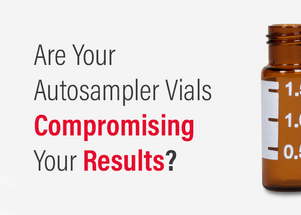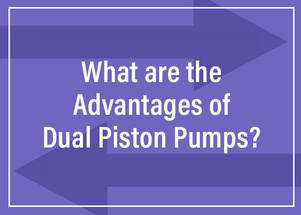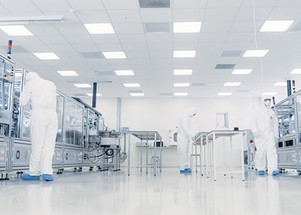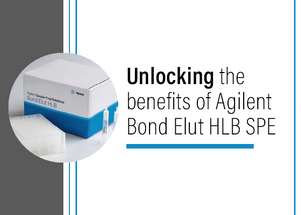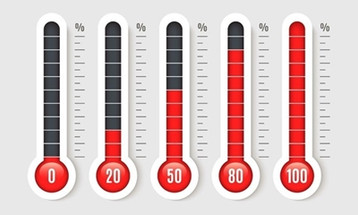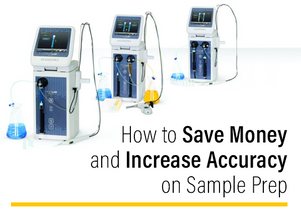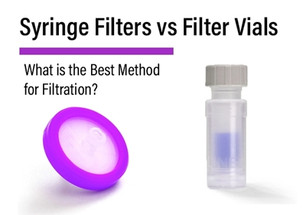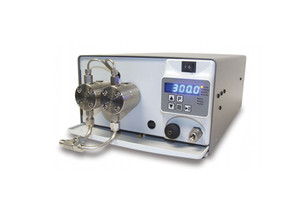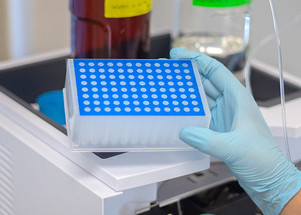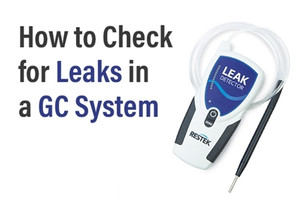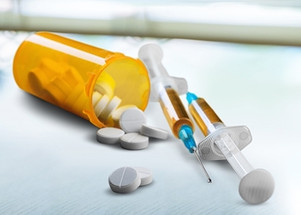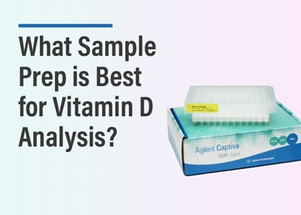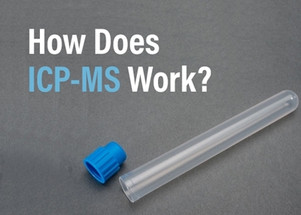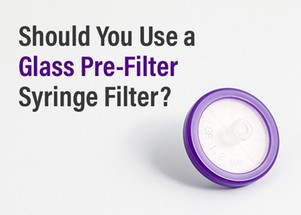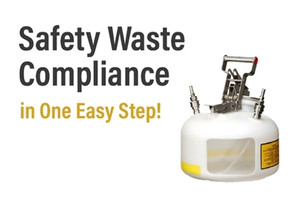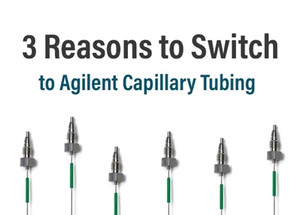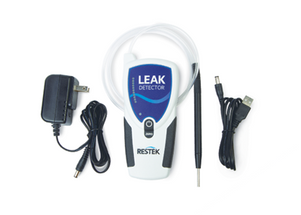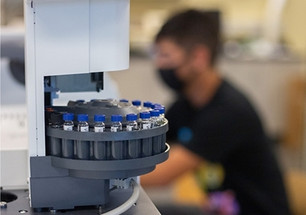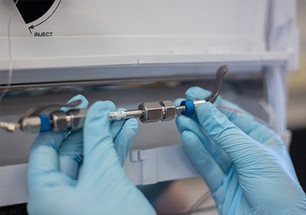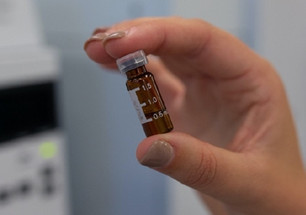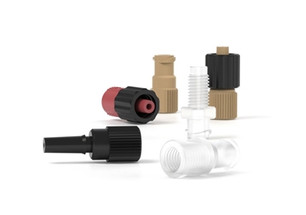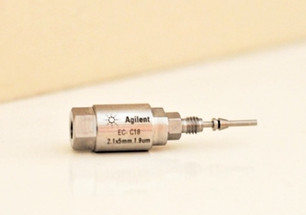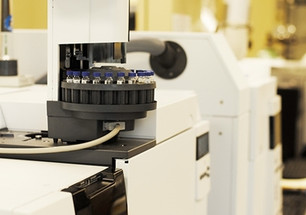16th May 2024
Blog
When selecting an
HPLC column, it is important to understand the different attributes and how they will affect your chromatography. Chemical properties, such as the type of surface of the s
…
15th May 2024
Optimizing HPLC Methods with Agilent’s InfinityLab Poroshell 120 Columns
More Chemistries, More Choices for Separation
The InfinityLab Poroshell 120 family has grown to include three particle sizes and 20 chemistries, so you can efficiently separate the widest variety
…
9th Apr 2024
How to Choose the Best Storage Vials
Solving Storage Challenges with F217 Liners
Screw thread vials are common for LC sample analysis as well
as sample or standard storage. But is there a difference between autosampler
vials and stor
…
27th Mar 2024
Are Your Autosampler Vials Compromising Your Results?
Exploring the Impact of Vial Quality on HPLC and GC Performance
In the
world of chromatography, choosing the appropriate instrumentation and
accessories is essential for achieving accurate and rel
…
12th Mar 2024
What are the Advantages of Dual Piston Pumps?
Chrom Tech HPLC pumps are used for many applications, many
of which are not even chromatography-related. Pump specifications can
dramatically impact the precision, reliability, and efficiency of
…
11th Mar 2024
5 Features to Consider When Choosing a Pump for Continuous Process Applications
Replacing Pharma's Conventional Batch Processing
In diverse manufacturing sectors, transitioning from conventional batch chemistry to continuous process applications prior to scaling up holds th
…
5th Jan 2024
Revolutionizing Your Chromatography | The Power of Poroshell and more
Are you frustrated with increasing backpressures from your current HPLC column? Do you wish you could achieve UHPLC results with HPLC instrumentation? Choosing the proper tools for success is importan
…
3rd Jan 2024
Unlocking the Benefits of Agilent Bond Elut HLB SPE
Discover
how Agilent Bond Elut HLB SPE products can revolutionize your sample
preparation process and provide optimal results.Understanding the
Importance of Sample Preparation
Sample prepar
…
30th Nov 2023
Revolutionizing UHPLC Connections: Introducing MarvelXACT by IDEX
Reliable HPLC
fitting
connections play a crucial role in ensuring accurate and consistent
results in UHPLC (Ultra-High Performance Liquid Chromatography) applications. Improper
fittings can l
…
7th Nov 2023
EHS Compliance: Safely Manage HPLC Solvent Waste
Many of the solvents, and even samples, used in high
performance liquid chromatography (HPLC) are hazardous and/or flammable. Because
of this, it’s important to mitigate health and safety risks t
…
11th Oct 2023
The 3 Most Common Applications for Headspace Vials
Gas chromatography (GC) is a widely-used technique for separating volatile
compounds in mixtures. One specific method, headspace GC, is employed to
extract and analyze limited volatile components
…
15th Sep 2023
How Does Column Temperature Affect HPLC Resolution?
HPLC Column temperature affects retention time, selectivity, peak shape, and pressure. Let’s look at this in more detail.Temperature Can Affect Retention Time
Retention measures the time it ta
…
15th Aug 2023
How to Save Money and Increase Accuracy on Sample Prep
Laboratories can instantly increase throughput and improve
their sample preparation accuracy with automation, but generally automation is
only common in high throughput laboratories. But, what if th
…
7th Jul 2023
Syringe Filters vs Filter Vials: What is the Best Method for Filtration?
For most chromatography applications, a sample taken directly from the source is usually not in a form that can be directly placed into the analytical instrument. Sample preparation can vary vastly, f
…
13th Jun 2023
How To Choose the Right Vial for Chromatography
In general, modern chromatography liquid autosamplers accept 12 x 32mm vials, so we will assume that a 12 x 32mm vial is compatible with your autosampler (Headspace autosamplers accept 20mm wide autos
…
8th May 2023
HPLC Pump Care and Troubleshooting
Many of the technical support inquiries we receive at Chrom Tech are related to care and troubleshooting of our continuous process pumps. Some of the topics include:
…
13th Apr 2023
The Benefits of Glass Well Plate Inserts
96 well plates are a standard consumable in high-throughput analytical laboratories that utilize mass spectrometry. Most commonly, we see polypropylene 96 deep well plates 2mL square or 1mL round 9
…
9th Mar 2023
Syringe Filters for HPLC Sample Preparation: A Guide to Choosing the Right Filter for Consistent and Accurate Results
Sample preparation is a crucial step in high-performance liquid chromatography (HPLC). While sample preparation can vary depending on the type of application and level of interference a sample contain
…
13th Feb 2023
How to Choose the Right Septa for Your Autosampler Vial Closure
When performing LC and GC analysis, you’ll need something to store and transport your samples prior to injection. Chromatography vials are the most common vessel, but come in a variety of shapes and s
…
19th Jan 2023
Maximizing Throughput in an HPLC Laboratory
There are many reasons to maximize sample throughput in a laboratory, but generally, cost savings is a huge driving factor. While optimizing the HPLC analysis is very beneficial, it’s important to loo
…
15th Nov 2022
What Should Forensic Labs Be Using for Blood Alcohol Testing?
Headspace injection and dual column GC-FID is an extremely common method for detecting blood alcohol concentration (BAC) in forensic labs. Due to the severity of consequences associated with an indivi
…
15th Nov 2022
How to Check for Leaks in a GC System
To achieve reliable, reproducible, and accurate results, maintaining a leak-free GC or GC/MS system is critical. Even small leaks in the system can negatively impact the chromatography through loss of
…
18th Oct 2022
New and Dangerous Synthetic Opioids
Are New Synthetic Opioids Posing Increased Risks?Synthetic opioids are commonly used in clinical settings as they provide analgesic effects for individuals suffering from severe pain. Unfortunately, t
…
11th Oct 2022
Methods for Changing Peak Resolution in HPLC
Improving the resolution of closely eluting sample components is a challenge that all chromatographers will face at one time or another. Several methods for changing peak resolution in HPLC include us
…
18th Sep 2022
What is the Smallest Sample Volume You Can Use in 96 Well Plates?
For high throughput laboratories, 96-well plates offer a number of advantages over chromatography vials such as cost savings and easy automation capabilities. Different well plate types serve differen
…
15th Sep 2022
What Sample Prep is Best for Vitamin D Analysis?
Low level testing of endogenous vitamin and hormone levels in biological samples is the driving force behind the need for more sensitive and specific analytical methods. One example is vitamin D analy
…
16th Aug 2022
Why You Should be Using a Delay Column for PFAS Analysis
PFAS in the Environment TodayPoly- and perfluoroalkyl substances (PFAS) are rapidly emerging as some of the most important environmental contaminants to monitor around the world. Known as “forever che
…
15th Aug 2022
Which Type of Glass Vial is Best for your Application?
Glass autosampler vials are commonly used for inertness, but with the many varieties of glass options, how do you decide which type of glass vials are suitable for your application? In this blog, we’l
…
12th Jul 2022
How Does ICP-MS Work?
How Does an ICP-MS Work?Inductively coupled plasma mass spectrometry (ICP-MS) is a method used to determine which elements something is made of, as opposed to molecules and compounds that are measured
…
12th Jul 2022
Should You Use a Glass Pre-Filter Syringe Filter?
Should You be Using a Glass Pre-filter Syringe Filter?Proper sample filtration improves both the quality and consistency of analytical results, while also prolonging the lifetime of your instrument’s
…
2nd Jun 2022
Safety Waste Compliance in One Easy Step
Improper waste collection and handling of hazardous waste can put the people and property in a lab at risk. Long gone are the days of dumping HPLC solvent waste down the drain, but even experienced ch
…
2nd Jun 2022
Three Reasons You’ll Want to Switch to Agilent Capillary Tubing
Stainless steel tubing is the most popular material for HPLC and UHPLC due to it being compatible with many HPLC solvents, and able to withstand very high pressures. PEEK is the most common alternativ
…
12th May 2022
One Simple Step to Conserve Helium
As most people in the GC industry are well aware, the helium shortage is still in full swing. Just a few weeks back, we posted a blog about alternative carrier gases. But we know that not everyone can
…
12th May 2022
Revisiting ‘The Big Pain’
Throughout the pandemic, drug testing facilities were suddenly slammed with COVID-19 testing, meaning other testing (drug screening, etc.) was pushed to the wayside. This meant regular employee drug s
…
12th Apr 2022
What LC Column Should I Use for EtG and EtS Detection?
Ethyl glucuronide (EtG) and ethyl sulfate (EtS) biomarkers are formed by the liver after ethanol ingestion. They can be detected in urine approximately 2-80 hours after alcohol is consumed. Due to the
…
12th Apr 2022
Using 96 Well Plates In High Throughput Laboratories
Using 96 well plates instead of autosampler vials has significant advantages for high throughput labs, due to the ease of automation. Unfortunately, not all steps in the process can be fully automated
…
12th Apr 2022
Do You Really Need Helium as Your Carrier Gas?
Unpredictable helium supply can be problematic for chromatographers. With ongoing helium shortages, some labs are being rationed to 50% of their normal supply. Chrom Tech can help you find an alternat
…
10th Mar 2022
When to Use High Recovery Vials
There are two main reasons for labs to utilize high recovery vials. The first, and likely most obvious, is for limited-volume samples. In these cases, getting the last few microliters is crucial for s
…
6th Mar 2022
How Many Injections Can I Get on My HPLC Column?
It depends! Many factors affect how many injections you can get on your column, including:
Injecting “dirty” samplesFollowing HPLC Column manufacturers recommended protocol/operating conditionsUsing
…
11th Feb 2022
Method Transfer between Poroshell and Zorbax HPLC Columns
One of the primary benefits to using superficially porous particle (SPP) HPLC columns, as opposed to totally porous particles is the results yield the efficiency of sub-2-µm, fully porous columns, wit
…
11th Feb 2022
How do Stainless-Steel Fittings Differ from Polymer-Based Fittings?
Both stainless-steel and polymer-based fittings are quite common in HPLC, and there are pros and cons for each. Deciding which to use for your lab depends on the application and requirements of your m
…
19th Jan 2022
True Crime and Chromatography
People have always been fascinated by mystery, and in recent years there has been a major rise in true crime series: podcasts, tv shows, and even books. The horrible, gruesome tragedies have become a
…
19th Jan 2022
Reduce Instrument Downtime with Sample Preparation
Reducing downtime in the laboratory saves time and money spent on getting the instrument back up and running. One easy way to reduce the downtime of your HPLC is to prolong the life of your HPLC colum
…
9th Dec 2021
Help! My Chromatography Vials are on Backorder!
As we all know, supply chain issues continue to cause issues in the lab. We’ve noticed an increase in people reaching out to see if we have certain vials in stock because they’re on backorder elsewher
…
9th Dec 2021
How to Connect a Syringe to HPLC Tubing
The need to connect a syringe to your LC pump to pull mobile phase through for priming (among other applications) is fairly common. We’ve seen some creative ways that people in the laboratory have con
…
15th Nov 2021
ASK BETHANY | Should I Use a Guard Column
HPLC ColumnsOne of the most important components in an LC system is the column, which is where analytes are separated out from a mixture for qualitative and quantitative analysis. HPLC columns need to
…
10th Nov 2021
What are the Benefits of Glass Vials in the Laboratory?
Chromatography vials are small glass or plastic vessels used in the lab to store and transport samples until they can be analyzed by HPLC or GC. Chances are, if you’re reading this, you probably do so
…
10th Nov 2021
An Essential Guide to HPLC Fittings for Your Laboratory
An Introduction to HPLC FittingsFittings are used any time tubing needs to be attached, adapted, or adjusted throughout the system, so creating good connections with fittings is extremely important fo
…




